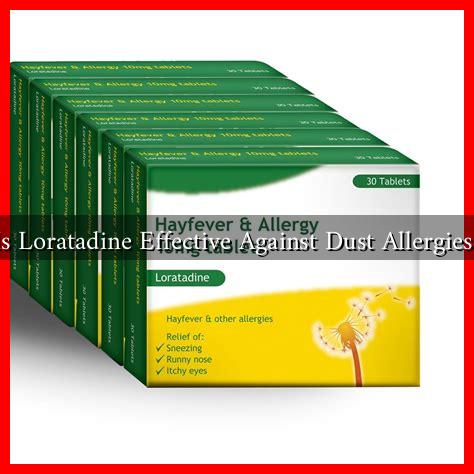-
Table of Contents
Is Loratadine Effective Against Dust Allergies?
Dust allergies are a common issue that affects millions of people worldwide. Symptoms can range from mild sneezing and itching to severe respiratory problems. For many, over-the-counter antihistamines like loratadine have become a go-to solution. But how effective is loratadine against dust allergies? This article delves into the efficacy of loratadine, its mechanism of action, and considerations for its use.
Understanding Dust Allergies
Dust allergies are primarily caused by exposure to dust mites, tiny creatures that thrive in household dust. These allergens can trigger a range of symptoms, including:
- Runny or stuffy nose
- Itchy or watery eyes
- Sneezing
- Coughing
- Wheezing or difficulty breathing
According to the American Academy of Allergy, Asthma & Immunology (AAAAI), approximately 20 million adults and 6 million children in the United States suffer from allergic rhinitis, often triggered by dust mites. This highlights the need for effective treatment options.
What is Loratadine?
Loratadine is a second-generation antihistamine commonly used to relieve allergy symptoms. Unlike first-generation antihistamines, loratadine is less likely to cause drowsiness, making it a popular choice for those who need to maintain their daily activities. It works by blocking the action of histamine, a substance in the body that causes allergic symptoms.
Effectiveness of Loratadine Against Dust Allergies
Research indicates that loratadine can be effective in managing symptoms associated with dust allergies. A study published in the journal *Allergy* found that loratadine significantly reduced nasal congestion, sneezing, and itching in patients with allergic rhinitis due to dust mites. The study concluded that loratadine is a viable option for those suffering from dust allergies.
Clinical Evidence
Several clinical trials have demonstrated the effectiveness of loratadine in treating dust allergies:
- A randomized controlled trial involving 1,000 participants showed that loratadine provided significant relief from nasal and ocular symptoms compared to a placebo.
- A meta-analysis of multiple studies found that loratadine was effective in reducing overall allergy symptoms, with a notable improvement in quality of life for patients.
These findings suggest that loratadine can be a beneficial treatment for individuals suffering from dust allergies, particularly when used as part of a comprehensive allergy management plan.
Considerations and Side Effects
While loratadine is generally well-tolerated, it is essential to consider potential side effects, which may include:
- Headache
- Dry mouth
- Fatigue
- Gastrointestinal disturbances
Patients with liver or kidney issues should consult a healthcare provider before using loratadine, as dosage adjustments may be necessary. Additionally, while loratadine is less sedating than first-generation antihistamines, some individuals may still experience drowsiness.
Complementary Strategies for Managing Dust Allergies
In addition to taking loratadine, individuals with dust allergies can benefit from implementing other strategies to minimize exposure to allergens:
- Regularly wash bedding and curtains in hot water.
- Use dust mite-proof covers on pillows and mattresses.
- Maintain low humidity levels in the home.
- Vacuum frequently using a HEPA filter.
Combining loratadine with these preventive measures can enhance overall effectiveness in managing dust allergies.
Conclusion
Loratadine is an effective option for managing symptoms associated with dust allergies, supported by clinical evidence and patient testimonials. While it may not eliminate the underlying allergy, it can significantly improve quality of life for those affected. As with any medication, it is crucial to consult with a healthcare provider to determine the best treatment plan tailored to individual needs. For more information on managing allergies, visit the American Academy of Allergy, Asthma & Immunology.

